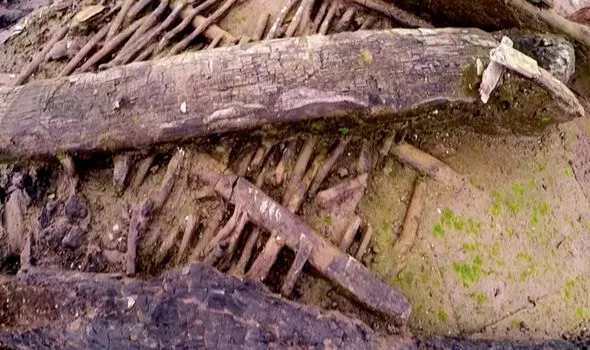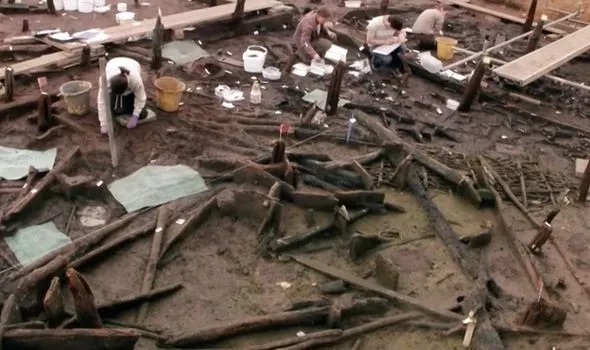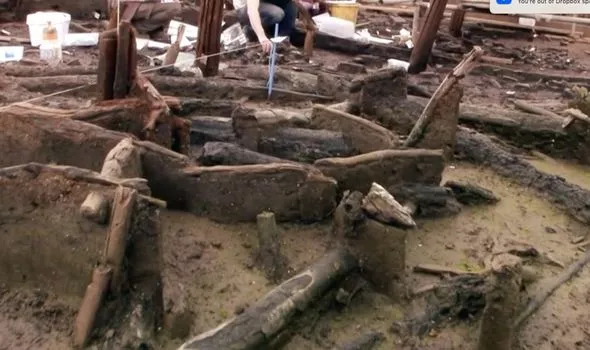‘Incredible’ 3,000-year-old Bronze Age roundhouse discovery dubbed ‘Britain’s Pompeii’
The discovery of the “best-preserved” Bronze Age dwellings ever found in Britain was carried out by archaeologists excavating a site in East Anglian Fens, Cambridgeshire, back in 2016.
But to this day, Prof Alice Roberts, who presents the television programme Digging For Britain and has seen spectacular digs unearthed up and down the country, said this could be the best dig she has ever covered. She told Express.co.uk: “It is one of my favourite sites ever, it was just incredible.“
Cambridge University archaeologists digging at Must Farm quarry, in Whittlesey, uncovered the charred oak roof timbers of a roundhouse, conserved in stunning detail.
The wooden house is part of a 3,000-year-old settlement of family homes that would have been built on stilts above the water.
Prof Roberts said: “It is so unusual to have buildings from the Bronze Age first-of-all, wood preserved so you can actually see the whole structure of those roundhouses and several of them.
“And then it was the fact that it had gone up in flames and then fallen into the water and obviously nobody has gone back to collect anything from the site and afterwards you wonder what happened to the inhabitants of the village.


“Because of that, you have got all the contents of those houses as well, and that is what I found utterly astonishing.“
The roundhouses, made out of wattle, reed and timber, and their contents collapsed into the water and into the river silt. Archaeologists say the speed and brevity of the event led to an almost instant entombment of the material.
Prof Roberts said: “Normally you just find scattered metal objects, bone objects and that kind of thing.
“But because of the incredible preservation, it went much further than that.“

The village was built about 1,000 years before the Romans settled in Britain. The surviving settlement was made up of five wooden roundhouses built closely together. Its discovery gives fantastic domestic detail into how ancient Britons arranged their homes, from cooking, to storage to crafts.
Prof said: “There was a fragment of a basket with little bundles of looked like twine inside it. It looked like a craft basket that had just fallen over inside somebody’s house.
“There were beautiful pieces of fabric, amazing pieces of textile that looked like very fine linen.
Prof Roberts comments come as her new series of Digging For Britain is set to air at the beginning of January 2022.


“It’s just a range of cultural artefacts. It was like somebody had gone to Bronze Age John Lewis and bought a whole dining set. Rather than one or two bowls, there were a whole set of different sized bowls with different functions. It was amazing.”
Duncan Wilson, Historic England’s chief executive said back in 2016: “A dramatic fire combined with subsequent waterlogged preservation has left to us a frozen moment in time.
“This site is of international significance and its excavation really will transform our understanding of the period.”
The site has been dubbed “Britain’s Pompeii,” although the Roman town-city was much larger (a plot of over 60 hectares with a population of approximately 11,000).
But in the English Fens, it was just a small river community of around 30 or so people living in nine or ten wooden roundhouses erected on stilts on a platform by the water.
Like the “Britain’s Pompeii” find, which featured on the series several years ago, the latest season of the show is jam-packed with stunning finds too.





